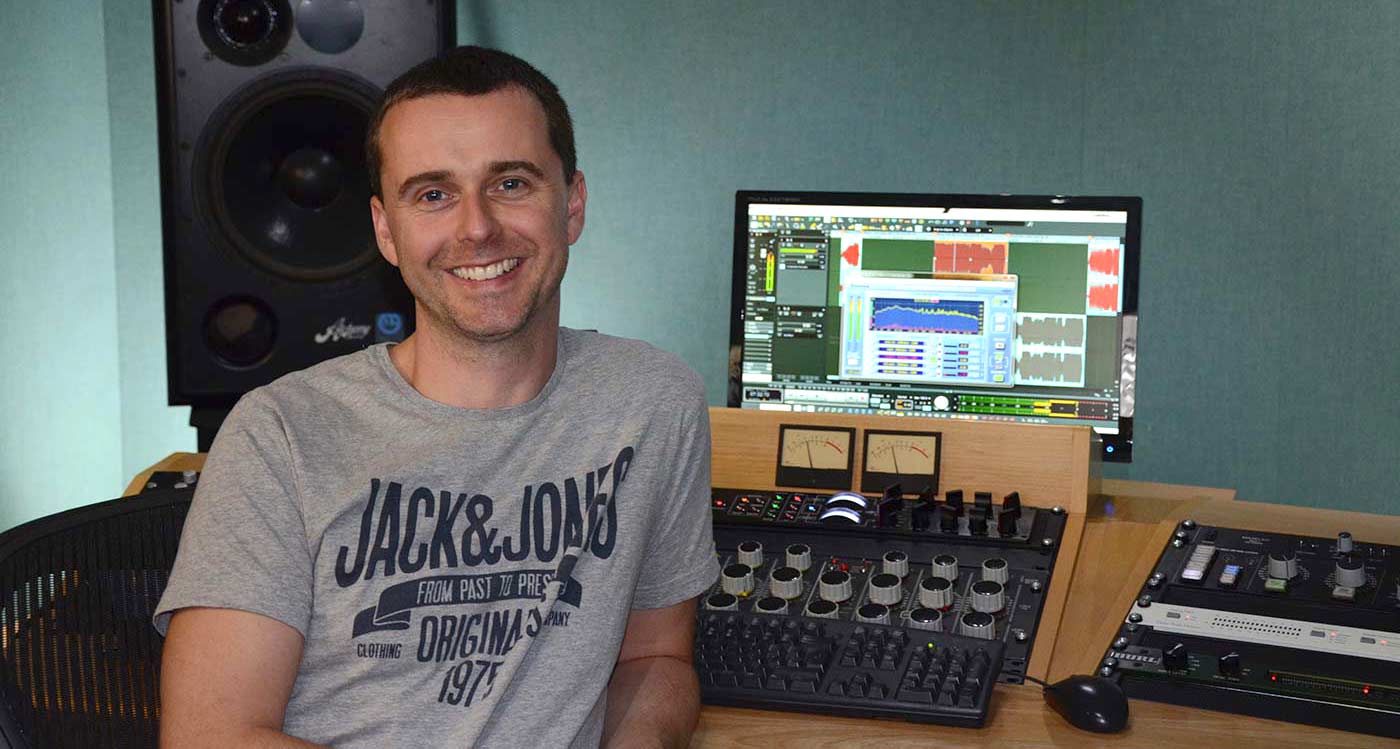Matt Colton: Mastering with Precision and Sonnox Plug-ins at Alchemy Mastering
As Director and Mastering Engineer at Alchemy Mastering in London, Matt Colton has worked with some of the biggest names in music, including James Blake, George Michael, Coldplay, Muse, and JJ Doom.
With a keen ear for detail and a preference for the best hardware and software, Colton’s mastering room in Hammersmith, West London, is equipped to handle the demands of top-tier artists. We spoke with Colton about his career journey, his mastering setup, and his use of Sonnox plug-ins to deliver exceptional results.

From Radio Producer to Mastering Engineer
Colton’s entry into the music industry started at a radio station where he worked as a commercial producer while programming dance music on an Atari in his spare time. “I knew I wanted to work closely with music, but I realized that making it as a recording artist wasn’t going to happen for me,” he explains. Through his radio connections, Colton met cutting engineer Mike Marsh, who suggested that Colton explore working in a cutting room. The idea stuck, and when Colton saw an ad for a trainee position at London’s Porky’s Mastering, he jumped at the opportunity.
Colton worked his way up from making tea to CD mastering, eventually gaining his own room and learning the art of cutting vinyl masters. After spending years at various mastering facilities, Colton now heads the all-new Alchemy Mastering in Hammersmith, where he continues to refine his craft.
A State-of-the-Art Mastering Room
Colton’s mastering room is equipped with ATC SCM150 monitors, which he praises for their incredible sound stage and precise stereo balance. “The placement and stereo imaging are very easy to understand, which makes them fantastic to work on,” he says. His setup includes a Neumann VMS 80 cutting lathe, Ampex ATR100 and Studer A80 tape machines with preview heads for pure analog disc cutting, and custom-made ultra-low noise replay electronics. Colton uses DAD and DCS converters, with outboard gear from GML, Maselec, Avalon, Summit, and TC, running Sequoia workstations with RME sound cards, complemented by a range of plug-ins.
Discovering Sonnox Plug-ins: A Game-Changer for Limiting
Colton first encountered the Sonnox Oxford Limiter about six years ago, and it quickly became his go-to limiter. “Pretty much every other digital limiter I’ve tried seems to pull the audio back and give you that brick-walled feeling,” Colton explains. “The Oxford Limiter keeps things open, letting the bass push through without feeling constrained. It’s not transparent, because nothing truly is, but it definitely has its own musical vibe.”
The Oxford Limiter keeps things open, letting the bass push through without feeling constrained
Colton appreciates that the Oxford Limiter allows transients and punch to pass through without slowing down, which is essential for maintaining the integrity of the sound. “It gets me the loudness my clients want without smashing everything to bits like most other limiters,” he says. “I usually start with the Oxford Limiter, and more often than not, it’s what ends up on the mix.”
Using the Oxford EQ for Analog-Like Warmth
Colton is also a fan of the Oxford EQ, which he finds reminiscent of analog EQs without the pretense of being an ‘analog-izer’ emulation. “The filters, Q’s, and the way it all works remind me of EQ’ing in analog, but with the flexibility of digital. It adds a little flavor without making things sound artificial,” he says.
One of the standout features of the Oxford EQ for Colton is the ability to set up two different EQs using the A and B options, allowing him to quickly compare different approaches. “It’s a great way to see which EQ approach works best without overcommitting,” he notes.
Adding Character with the Inflator and Fraunhofer Pro-Codec
Colton often turns to the Sonnox Inflator when working with quiet but overly compressed mixes. “The Inflator can add low-end weight and warmth, making it perfect for mixes that need a little extra presence,” he says. He also participated in the beta testing of the Sonnox Fraunhofer Pro-Codec, a tool he now uses for creating high-quality MP3s and AACs when clients need compressed formats. “It’s an excellent encoder that ensures the best possible sound when delivering in these formats.”
Colton shares his typical starting settings for the Oxford Limiter: “I usually start with Safe Mode off, Enhance around 15%, and Output Level at -0.6 dB. Attack and Release are set to 0.05 ms, and the Knee is off. This setup is great for electronic music that needs to stay sharp and punchy, allowing the bass to remain intact while keeping everything clean and open.”
For adding thickness to a mix, Colton activates Safe Mode and adjusts the Enhance setting back to zero. “For rock or metal tracks, I might use slower Attack and Release settings and a larger Knee, with Safe Mode on to get that rock thickness,” he adds.
Sonnox Plug-ins: Indispensable Tools in Colton’s Kit
For Colton, Sonnox plug-ins are essential tools that deliver consistent, high-quality results. “They are efficient, easy to master, and help optimize my workflow,” he says. “The Sonnox Fraunhofer Pro-Codec, in particular, has been a great time-saver and a valuable addition to my toolkit.”
As Colton continues to work with top artists, his commitment to using the best tools available remains unwavering. Whether it’s the Oxford Limiter, EQ, or Inflator, Sonnox plug-ins play a crucial role in helping him deliver the exceptional sound quality his clients expect.
